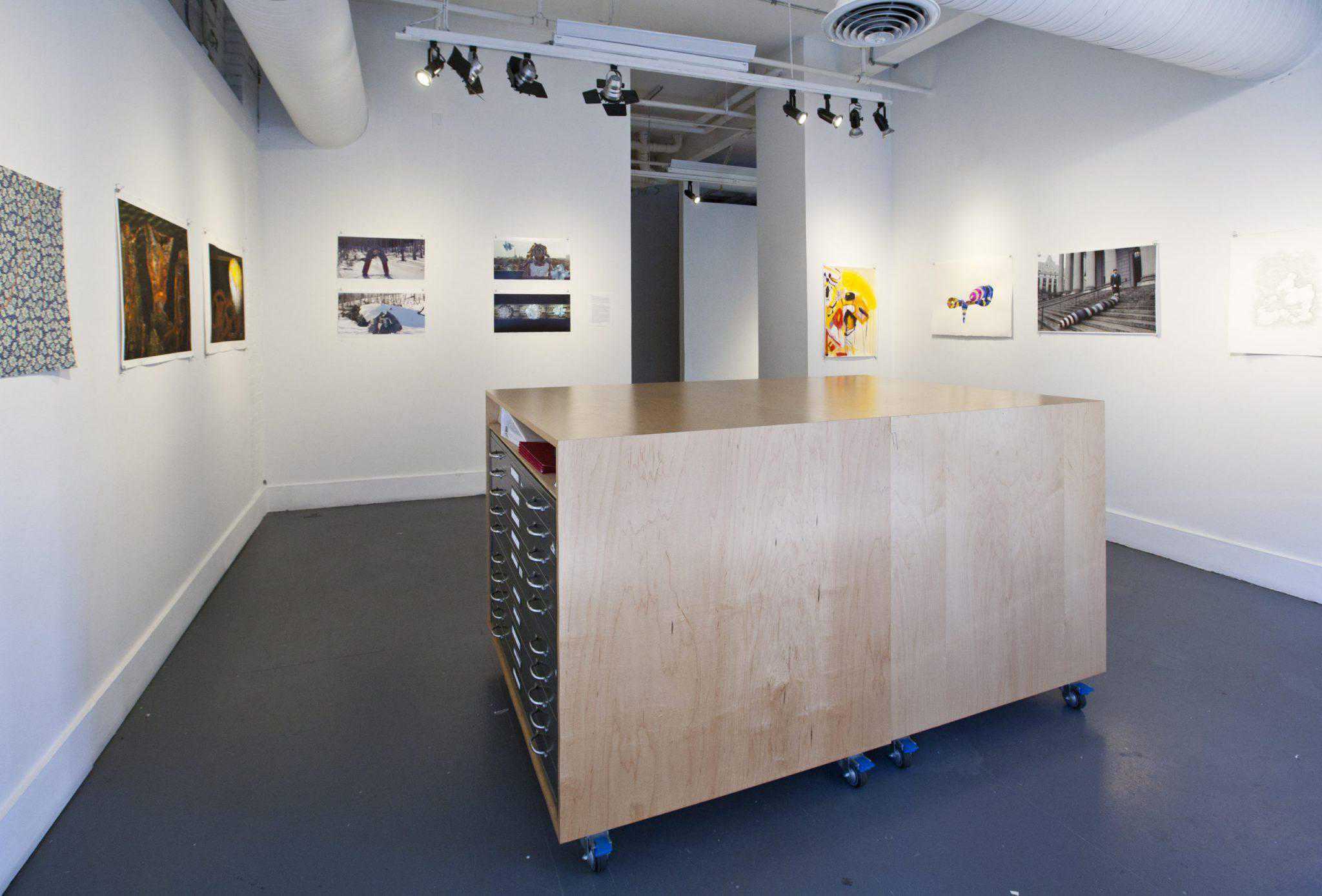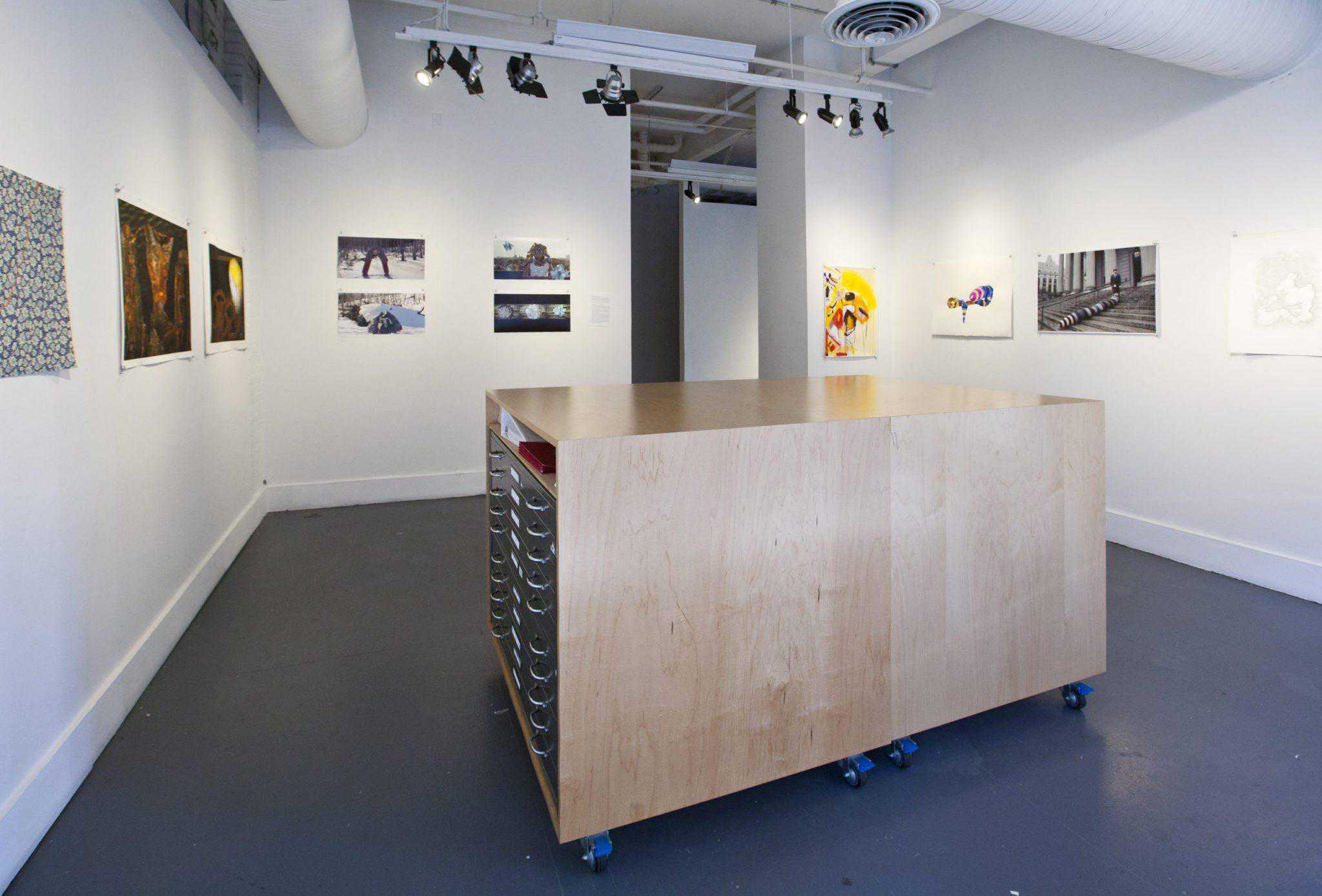
Fetish Objects
Curator: Martha Lewis
May 11—June 29, 2013
Lani Asuncion, Robert Gregson, David Livingston, Allison Meyler, Aurora Pellizzi, Lawrence Russ
FETISH (n.)
First used in 1610, most likely by Portuguese sailors/ traders as a name for charms and talismans “worshipped” by the inhabitants of the Guinea coast of Africa. Popularized in anthropology by C. de Brosses’ “Le Culte des Dieux Fétiches” (1760), which influenced the word’s spelling in English. Figurative sense of “something irrationally revered” is American English, from 1837. The word is derived from the French fétiche; from the Portuguese feitiço; and this in turn from Latin facticius, “artificial” and facere, “to make.” It is an object believed to have supernatural powers or, in particular, a man-made object that has power over others. Essentially, fetishism is the emic attribution of inherent value or powers to an object. The word has strong colonialist and sexual connotations.
Definition:
1 a : an object believed to have magical power to protect or aid its owner; broadly : a material object regarded with superstitious or extravagant trust or reverence.
b : an object of irrational reverence or obsessive devotion.
c : an object or bodily part whose real or fantasied presence is psychologically necessary for sexual gratification
2 : a rite or cult of object worshipers
3 : fixation
Synonyms: fixation, idée fixe, mania, obsession, preoccupation, prepossession.
This exhibition focuses on tactile objects as imagery that travels the spectrum from drawn line to dimensional construct to performance and wearable prop and back again. The artists here all employ different means to similar ends, the adulation of surface quality to create objects of an iconic and visceral nature. Materials are treated as substances; artifacts leaving traces, looping their way across surfaces, make images. Lines become physical forces through repetition and number. Tactility and the ghostly remnant of a (de)valued object form the drawing in Aurora Pellizzi ‘s rubbed crayon pesos and her copper leaf “necklace” on floral printed paper. Lawerence Russ makes lush photographs of worn surfaces and time-altered objects glorified through enlargement and gorgeous pigment printing. Both David Livingston, and Lani Asuncion use handmade structures in performances which, with humor and imagination, take their given materials and transform them into ritual objects that echo the sacred and the powerful, creating mythologies in modern settings. Alison Meyler’s looping gestures are made hyper-tactile with her choice of thick colorful materials and Robert Gregson’s careful, repetitive graphite marks built with many layers to create individual works which are like intense schematics for some unknown creature, substance or location. All artists imbue their practice with a varied and personal sense of wonder, mystery and urgency, making Fetish Objects a joyful introduction to their work.
Lani Asuncion, a multimedia artist and adjunct professor at Quinnipiac University, addresses questions of ethnicity and cultural heritage through her video and photography practice. She has been the recipient of artist residencies at the Contemporary Arts Center of Woodside and the Caldera Arts Center. Her work has been shown nationally and internationally in Santa Fe, Los Angeles, New York, Gothenburg, Germany, and the United Kingdom. Her work can be viewed online at http://laniasuncion.com.
Robert Gregson, who completed his BFA at the Hartford Art School and his MFA at the Art Institute of Chicago, has based his photographic practice around capturing captivating architectural details. He has been honored with the Spirit of Connecticut Award and the Governor’s Tourism Award from the State of Connecticut and has been featured in numerous solo and group shows throughout the northeast. His work can be viewed online at http://www.bobgregson.com.
David Livingston’s artistic practice encompasses drawing, collage, text, sculpture, and performance pieces centered on organic shapes and worm-like imagery. He received his BFA from Kenyon College and his MFA from the Pratt Institute. He was a 2011 resident at the Vermont Studio Center and his work was featured in the Governor’s Island Art Fair in both 2011 and 2012. His work can be viewed online at http://davidlivingstonart.com.
Allison Meyler, a Wesleyan graduate and frequent contributor to the Ridgefield artistic community, combines traditional drawing tools and acrylic paint in her multimedia practice. Utilizing a grid formed by multiple sheets of paper, she conceives of her works as a continuous piece before separating them out into component parts. Her work can be viewed online at http://www.allisonmeyler.com.
Aurora Pellizzi, a New Haven artist born in Mexico City, received a BA in Art History from New York University and a BFA from the Cooper Union. Her work incorporates her experiences with traditional craft while employing contemporary materials and technology. She has been featured in solo and group shows in the United States, Mexico, and Colombia. Her work can be viewed online at http://aurorapellizzi.com.
Lawrence Russ, a poet and photographer, studied Writing and the History of Art during his undergraduate years at the University of Michigan and Writing during his MFA program at the University of Massachusetts, Amherst. His photographic work, which combines aspects of the surreal, the impressionist, and the abstract, has been selected for exhibition by distinguished jurors throughout the United States and was recently selected for international recognition in the Color Magazine Single Image Contest Issue. His work can be viewed online at http://www.lawrenceruss.com/.

